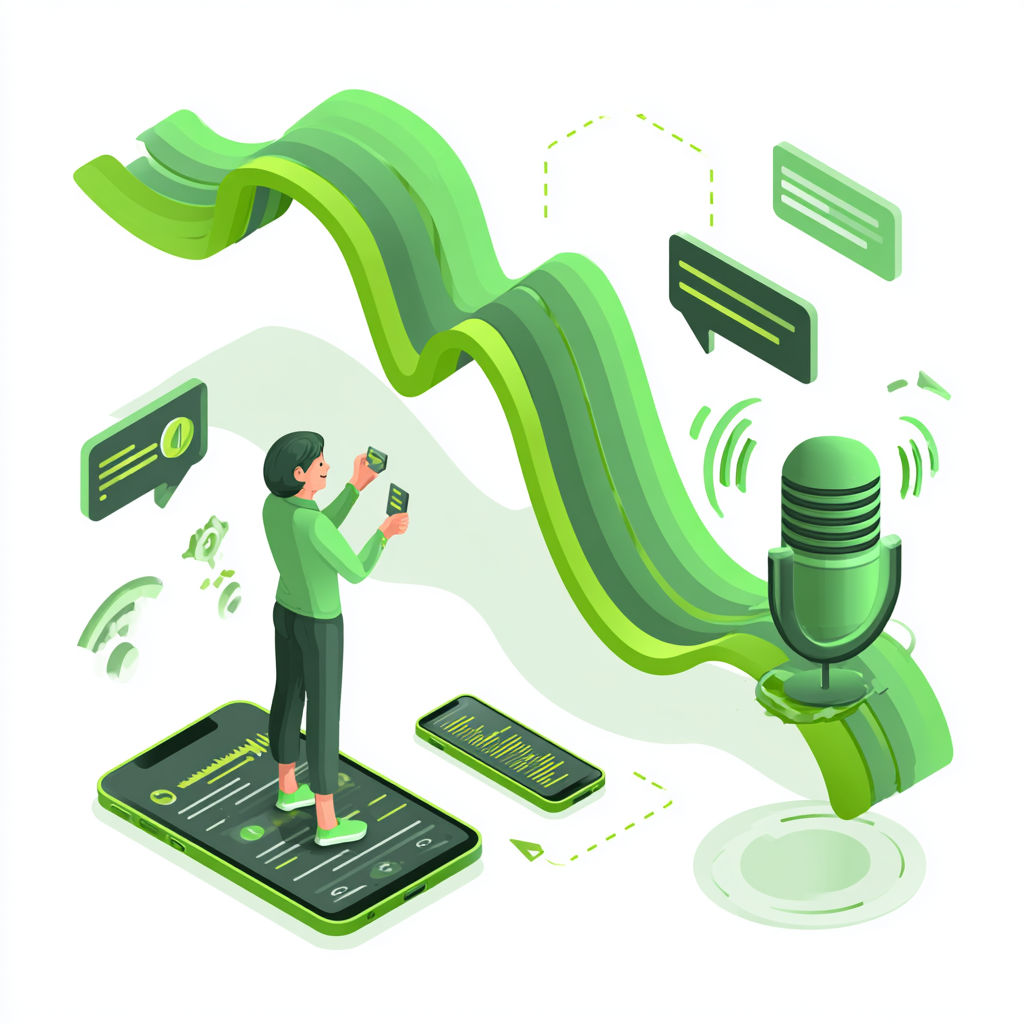Customer experience is more than providing great products or services. It is about how customers feel when interacting with your brand. Emotions play a crucial role in shaping purchasing decisions, brand loyalty, and word-of-mouth recommendations. Businesses that understand and measure customer emotions can enhance engagement, decrease churn, and foster stronger relationships with their audience. Research has shown that emotional connections drive more significant customer loyalty than customer satisfaction alone. Despite this, many businesses focus primarily on rational factors, such as product quality and pricing, without considering the emotional experiences that drive customer behavior. This article examines the significance of customer emotions, the distinctions between emotions and satisfaction, and ten practical methods for measuring emotions in the customer experience.
What is customer emotion?
Customer emotion refers to the feelings customers experience throughout their interactions with a business. These emotions can range from happiness and trust to frustration and disappointment. Understanding customer emotions is crucial because emotions influence decision-making. Studies in neuroscience suggest that people rely on emotions more than logical analysis when making purchasing decisions.
What emotions might your customers display, and when?
Customers experience a range of emotions at various touchpoints throughout their journey. Recognizing these emotions enables businesses to create experiences that foster positive emotional connections.
- Pre-purchase: Anticipation, curiosity, trust, skepticism
- During purchase: Excitement, confidence, frustration, confusion
- Post-purchase: Satisfaction, disappointment, gratitude, regret. For example, a customer may feel excited about a new product but frustrated if the checkout process is too complicated.
Customer emotion vs. customer satisfaction
While customer satisfaction is an important metric, it does not fully capture the emotional aspect of a customer’s journey. Satisfaction measures whether a product or service meets expectations, but emotions dictate whether a customer will return or recommend a brand to others. For instance, two customers may rate a service as “satisfactory,” but one may feel delighted while the other is indifferent. Understanding these emotional differences enables businesses to personalize interactions and enhance the overall customer experience.
How to capture customer emotion
Businesses can capture customer emotions using various techniques, from direct feedback to advanced AI-driven tools. The key is to combine different methods for a more comprehensive understanding of customer sentiment.
10 Ways to measure customer emotion
The ten (10) ways to measure customer emotion include:
A. Direct feedback approaches
- Surveys and questionnaires
- To gauge customer sentiment, utilize tools such as Net Promoter Score (NPS), Customer Satisfaction Score (CSAT), and Customer Effort Score (CES).
- Ask open-ended questions to capture deeper emotional insights.
- Sentiment-driven questions like “How did this interaction make you feel?” can provide better emotional understanding.
- Interviews and focus groups
- Conduct one-on-one interviews or group discussions to gain a detailed understanding of customer emotions.
- Encourage honest feedback by creating a relaxed environment.
- Open-ended discussions enable businesses to capture emotions that structured surveys may overlook.
B. Behavioral analytics
- Customer interaction analysis
- Analyze phone calls, emails, and live chat interactions for tone and sentiment.
- Identify patterns of frustration, confusion, or satisfaction in customer conversations.
- AI-powered tools can detect emotional tones and keywords in conversations.
- Website and app behavior tracking
- Utilize heatmaps and session recordings to observe how customers engage with digital platforms.
- Look for signs of frustration, like rage clicks or high bounce rates.
- Understanding drop-off points can help businesses optimize digital experiences.
C. Sentiment analysis and AI-based tools
- Natural language processing (NLP) and text analysis
- Use AI tools to analyze social media mentions, online reviews, and customer comments.
- Identify common emotions and trends based on keywords and sentiment scoring.
- Sentiment analysis tools provide real-time insights into customer emotions.
- Facial recognition and biometrics
- Some businesses use facial expression analysis to measure emotional responses in real-time.
- Biometrics, like voice tone analysis, can also assess customer emotions.
- AI-driven facial recognition tools analyze micro-expressions for emotional insights.
D. Physiological and neuromarketing techniques
- Eye-tracking studies
- Track where customers look when browsing products or websites.
- Identify which elements create excitement or confusion.
- Eye tracking helps understand what captures customer attention.
- Heart rate and Galvanic skin response (GSR)
- Measure physiological reactions to marketing materials or brand interactions.
- Identify emotional responses that customers may not express verbally.
- This method is beneficial for testing advertisements and brand messaging.
E. Alternative customer emotion measurement techniques
- Customer journey mapping with emotional touchpoints
- Map out each stage of the customer experience and note key emotional moments.
- Use this data to enhance high-impact touchpoints.
- Emotional journey mapping helps create personalized experiences.
- Social listening and online review analysis
- Monitor customer sentiment across Twitter, Facebook, LinkedIn, and review sites.
- Identify trends in customer emotions and address concerns proactively.
- Social media sentiment analysis provides real-time feedback on customer emotions.
Creating an emotional connection with the customer
Here are key strategies businesses can use to build emotional connections with their customers:
1. Personalizing customer interactions
Customers appreciate brands that understand their preferences, needs, and past interactions with them. Personalization helps create a sense of connection by making customers feel valued.
- Utilize customer data to personalize recommendations based on past purchases or browsing history.
- Send personalized emails and messages that acknowledge special occasions, such as birthdays, anniversaries, or past purchases.
- Provide customized offers that align with individual preferences rather than generic promotions.
2. Using storytelling and brand values to evoke emotions
Storytelling is a tool that allows businesses to connect with customers on an emotional level. When brands share their mission, struggles, and achievements, customers relate to them as more than just companies. They see them as part of a larger purpose.
- Use brand storytelling to highlight company values, ethics, and history in a way that resonates emotionally.
- Incorporate videos, blogs, and testimonials to evoke joy, inspiration, or nostalgia.
3. Training employees to recognize and respond to customer emotions
Employees are often the front line of customer interactions. Their ability to recognize, understand, and respond to customer emotions can significantly impact customer experience.
- Train employees in emotional intelligence to help them recognize and respond appropriately to customer emotions.
- Encourage the use of empathetic language in customer interactions to make customers feel heard and valued.
- Equip teams with problem-solving skills that help address customer frustrations compassionately and effectively.
4. Creating surprise-and-delight moments
Small, unexpected gestures can leave a lasting emotional impact on customers. These moments make customers feel appreciated and deepen their emotional connection with the brand.
- Send handwritten thank-you notes to long-time customers or those who leave positive reviews.
- Offer unexpected rewards or discounts to loyal customers as a token of appreciation.
- Go the extra mile by providing free upgrades, exclusive access, or personalized product recommendations.
5. Being transparent and authentic
Customers connect with honest, ethical, and transparent brands in their operations. Brands that uphold integrity and openly communicate with customers foster stronger emotional ties.
- Be honest about pricing, policies, and product availability to maintain customer trust.
- Admit and address mistakes openly rather than trying to cover them up.
- Stand by your brand values and social commitments. Customers are increasingly preferring businesses that align with their values.
Improving your customer experience with Qualtrics
Qualtrics is a customer experience management platform that helps businesses measure, analyze, and enhance customer emotions throughout their journey. By leveraging advanced analytics and AI-driven tools, Qualtrics enables brands to gain deeper insights into customers’ emotions at various touchpoints and take immediate action to enhance satisfaction and loyalty.
Key features and benefits of Qualtrics
1. AI-driven sentiment analysis
- Qualtrics uses natural language processing (NLP) and machine learning to analyze customer feedback from surveys, emails, chats, social media, and online reviews.
- The AI can detect emotional tones (e.g., happiness, frustration, disappointment) and provide businesses with actionable insights.
2. Experience management dashboards
- The platform provides a centralized dashboard that tracks customer sentiment, emotional trends, and key experience metrics over time.
- Businesses can visualize emotional shifts in real-time and pinpoint specific areas needing improvement.
3. Customizable surveys and feedback forms
- Qualtrics enables businesses to design dynamic and customizable surveys tailored to different customer interactions.
- Surveys can include open-ended questions, multiple-choice questions, and emotion-based rating scales to capture nuanced emotional responses.
4. Voice of the customer (VoC) programs
- With Qualtrics, companies can establish Voice of the Customer (VoC) initiatives that continuously collect and analyze customer feedback.
- It ensures that decision-making is based on genuine customer emotions rather than assumptions. VoC insights help brands enhance service delivery and create experiences that emotionally resonate with customers.
5. Predictive analytics for emotional trends
- Qualtrics integrates predictive analytics to forecast emotional shifts and identify potential dissatisfaction before it escalates.
- Businesses can utilize these insights to implement changes that enhance engagement, retention, and the overall customer experience.
Why use Qualtrics for measuring customer emotion?
Qualtrics’ approach leads to stronger brand loyalty, improved customer retention, and long-term business success.
- Real-time emotional insights: Helps businesses capture and act on customer sentiment instantly.
- Scalability: Suitable for small businesses and large enterprises looking to improve customer experience.
- Integration with other tools: It seamlessly integrates with CRM systems, social media monitoring tools, and helpdesk platforms to provide a holistic view of customer sentiment.
Why measuring customer emotion matters
Measuring customer emotion is crucial for delivering an exceptional experience. By understanding emotions at various touchpoints, businesses can enhance customer satisfaction, foster loyalty, and drive long-term success. With tools such as surveys, AI-powered sentiment analysis, and biometric tracking, companies can capture genuine emotions and make data-driven decisions that positively impact the customer experience. As technology advances, businesses prioritizing emotional insights will stand out in competitive markets. The future of customer experience is not just about satisfaction. It is about emotional connection. By focusing on emotions, brands can create memorable experiences that foster deeper customer relationships and drive sustainable business growth.





